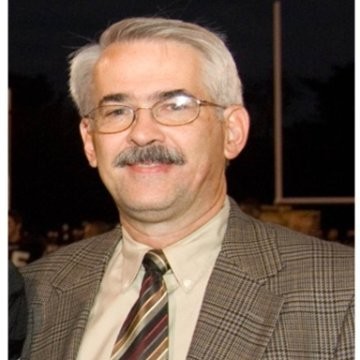A pioneer in the field of exosome biology engaged in research misconduct by reusing images he had falsely relabeled in two published papers and several grant applications, according to a U.S. government research watchdog.
The case goes back several years, as the scientist’s former institution seems to have been investigating his work for nearly a decade.
Douglas Taylor, who in the 1970s discovered that tumor cells release exosomes, “used falsely labeled images to falsely report data in figures, and in one finding, intentionally, knowingly, or recklessly plagiarized, reused, and falsely labeled an image to falsely report data in a figure,” according to the published finding from the U.S. Office of Research Integrity (ORI).
An exosome is “a tiny sac-like structure that is formed inside a cell and contains some of the cell’s proteins, DNA, and RNA,” and they may play a role in cancer spreading, according to the National Cancer Institute.
Taylor, now chief scientific officer from 2013 until 2015 at the company Exosome Sciences, was previously the vice chair for research in the Department of Obstetrics & Gynecology at the University of Louisville School of Medicine, which conducted a research misconduct investigation it forwarded to ORI.
ORI found that Taylor faked research results in 13 grant applications, one of which was funded, as well as two published papers that relied on government funding.
The funded grant, R41 CA139802-01, “Exosomal microRNA profiles as diagnostic biomarkers of ovarian cancer,” was awarded $153,215 from the National Cancer Institute from 2009-2011. Taylor has received more than $1.5 million in funding from the National Institutes of Health since 1985.
The two papers identified in ORI’s findings were both published in the journal Gynecologic Oncology. “Patient-derived tumor-reactive antibodies as diagnostic markers for ovarian cancer,” from 2009, has been cited 72 times, according to Clarivate’s Web of Science. “MicroRNA signatures of tumor-derived exosomes as diagnostic biomarkers of ovarian cancer,” from 2008, has been cited 1,780 times. The bulk of those citations came after a 2010 corrigendum, which has been cited eight times.
ORI’s finding includes a long list of instances when Taylor faked results by reusing images and relabeling them as representing different types of cancers.
Besides reusing images from his own work, in one case ORI found that Taylor took an electron micrograph image depicting exosomes from melanoma that had been published in a 2002 paper in the Lancet and used it in several grant applications and the 2008 paper in Gynecologic Oncology to represent both ovarian cancer and lung cancer. A commenter on PubPeer pointed out the image reuse in the published paper in 2013.
Taylor did not immediately respond to our request for comment on ORI’s finding, but back in 2015, when we published a story about a paper of his in the Journal of Immunology that was retracted at the request of the University of Louisville, he told us that the university’s investigation was “biased” and “motivated by retaliation by UofL, who have intentionally generated unfounded allegations.”
ORI’s announcement said Taylor has been banned from all federal contracting – which includes grant funding – for three years, starting from Oct. 17, 2022. He also may not have any advisory or consultant role with the U.S. Public Health Service, which includes the National Institutes of Health, for three years. The U.S. Department of Health and Human Services, which houses ORI, said it will also contact Gynecologic Oncology about its findings “and the need for retraction or correction of” the two published papers.
Update, 2000 UTC, 12/6/22: Updated to note that Taylor left Exosome in 2015, contradicting his LinkedIn profile. The company declined to comment on the circumstances of his departure.
Like Retraction Watch? You can make a tax-deductible contribution to support our work, follow us on Twitter, like us on Facebook, add us to your RSS reader, or subscribe to our daily digest. If you find a retraction that’s not in our database, you can let us know here. For comments or feedback, email us at [email protected].

It is a step forward for women’s health that the problematic data have come to light.
So he’s only banned from the US Public Health Service for 3 years ?, seriously, this man is a fraud, he should be banned from any and all Federal Govt funded biomedical research for life
Maybe even more importantly, he should be sued for the funded grant for which the application was fraudulent.
RW: thanks for this notice because it has at least two unexpected features (i.e., assuming I haven’t overlooked something in my declining years). Specifically, as I wade through ORI’s very detailed finding I could not find any instances citing reuse of the false data within the 6 year limit that defines PHE jurisdiction (for when a case is opened).
If this case is just that old, then there is hope yet for other ORI findings on cases RW knows to be pending.
Second, many will be unaware of a so called “Corporate Integrity Agreement” (CIA). At one time companies who contract with the Feds had to specify through a CIA whether there is any federal action against any employee who might be involved in the project. Running off to industry is not always a vehicle to escape from misconduct.